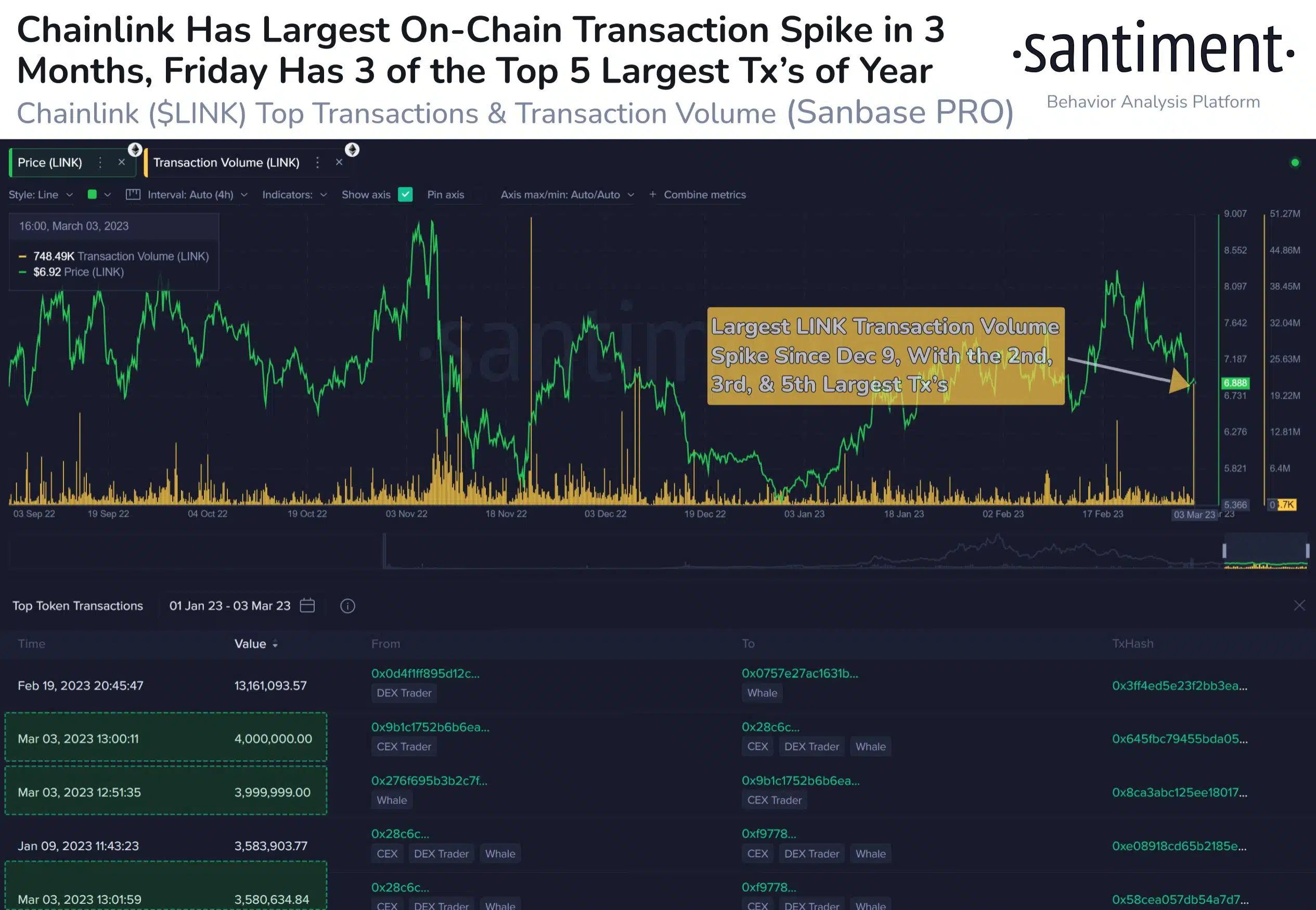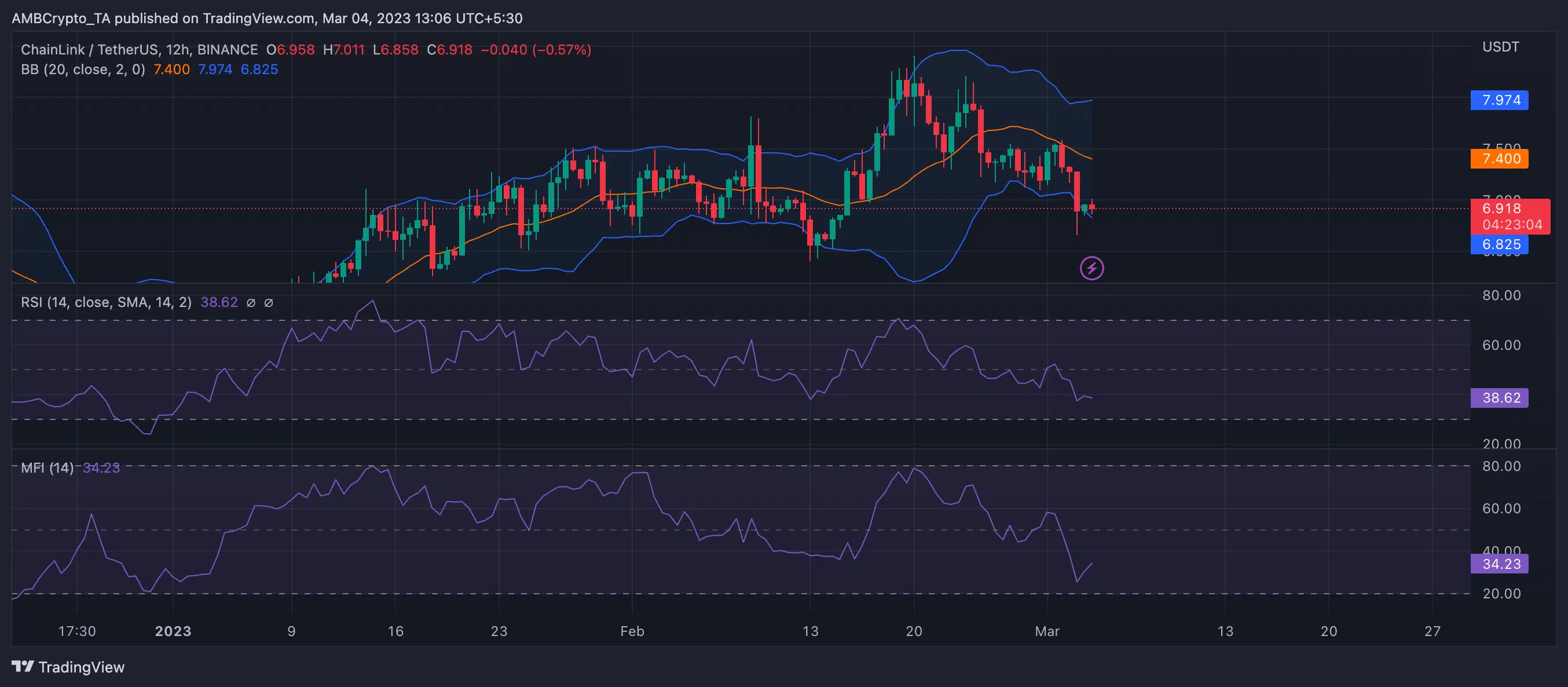Chainlink: Base integration, underwater prices, and its effects on LINK

- Chainlink has integrated its price feeds with Base.
- LINK’s price is expected to decline further as buying momentum waned.
On 3 March, leading oracle network Chainlink [LINK] announced the integration of its price feeds with the newly launched Base testnet, the Ethereum [ETH] Layer 2 blockchain owned by crypto exchange Coinbase.
? @BuildOnBase by @Coinbase has integrated Chainlink Data Feeds on testnet and is joining the #ChainlinkSCALE program.#Base is covering the operating costs of #Chainlink services to empower devs, drive ecosystem growth, & support network sustainability.https://t.co/uTYm09uAiG pic.twitter.com/ggTt9DWpDF
— Chainlink (@chainlink) March 3, 2023
Read Chainlink’s [LINK] Price Predcition 2023-2024
According to the press release, the L2 platform will also participate in the Chainlink SCALE program. This program offers Chainlink data and services at a lower cost to developers.
As part of the Chainlink SCALE program, Base will support the operational costs of Chainlink services on its network and minimize the gas costs incurred by Chainlink nodes when submitting oracle reports. This collaboration will benefit developers working on Base’s platform by providing them with affordable and easily accessible Chainlink services.
The outlook appears gloomy
According to data from Santiment, LINK’s transaction volume climbed to a three-month high by the end of the trading hours on 3 March. This caused the asset to log three of the top five largest transactions recorded by any crypto asset this year.
Data from the on-chain analytics platform revealed that the sudden surge in transaction volume was due to three large whale transactions, which occurred within 11 minutes of each other, and involved the transfer of approximately $79.7 million worth of LINK tokens.
However, this has failed to positively impact the token’s price. At press time, LINK’s price was $6.92 and had grown by a mere 1% in the last 24 hours, according to data from CoinMarketCap.
Trading volume dropped by 35% during that period, indicating buyers’ exhaustion. This price/volume divergence is often taken as a bearish signal, as it suggests that the liquidity present in the market could no longer drive up LINK’s price; hence, a price drawdown was imminent.
An assessment of LINK’s performance on a 12-hour window confirmed this. At press time, buying momentum had declined significantly. LINK’s Relative Strength Index (RSI) and Money Flow Index (MFI) indicators trended downwards toward oversold regions. The RSI rested at 38.62, while the MFI was 34.23.
Also, LINK’s price was affected by severe volatility, making investors increasingly uncertain of the direction the alt’s price would swing next. This contributed to the spike in token sell-offs, as many holders scampered to hedge against losses.
Is your portfolio green? Check out the LINK Profit Calculator
The asset’s Bollinger Bands (BB) revealed a significant gap between the indicator’s upper and lower bands. Generally, widening bands may indicate that an asset’s volatility is increasing.
A closer look at the indicator revealed that LINK’s price had touched the lower band at press time. While this clearly indicates that an asset has been oversold, it often hints at a looming price reversal.








